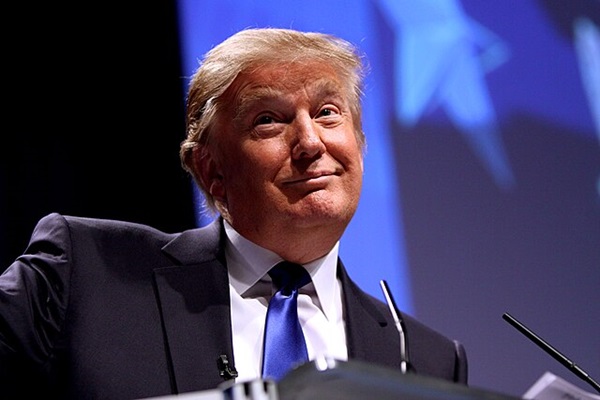.png)

Ajay Srivastava, founder of Global Trade Research Initiative, is an ex-Indian Trade Service officer with expertise in WTO and FTA negotiations.
March 27, 2025 at 8:18 AM IST
US President Donald Trump likely believes in a shock-and-awe military strategy. His latest move is the announcement of a sweeping 25% tariff on completely built vehicles and automobile components, set to take effect on April 3.
This has sent ripples through global automotive markets. However, its implications for Indian automobile industry is expected to be minimal, and this may, in fact, present an opportunity for Indian exporters.
An analysis of India’s automobile and component exports in 2024 suggests that these tariffs will have little effect on Indian exporters.
For example, India exported only $8.9 million worth of passenger vehicles to the US in 2024, compared to the overall car exports of $6.98 billion. In other words, the US accounted for just 0.13% of India’s total automobile exports. This is way too small a proportion for the tariffs to have any significant impact on India’s thriving automobile export sector. Any attempt by India to lower tariffs to avoid the new tariffs would likely be counterproductive.
In fact, the Australian experience offers a cautionary tale. When Australia reduced its import tariffs from 45% to 5% in the late 1980s, it paved the way for the eventual collapse of its domestic automobile manufacturing industry.
Given that the Indian automobile sector contributes nearly one-third of the country’s manufacturing GDP, India must avoid making any similar misstep. Preserving the stability of the sector is crucial. Even in the case of trucks, India’s exposure to the US is minimal. India exported trucks worth $12.5 million to the US in 2024, or just 0.89% of the total truck exports.
There will be some impact on exports of car chassis fitted with engines. India exported car chassis fitted with engines worth $28.2 million in 2024, accounting for 11.4% of total exports of $246.9 million. However, this is still a relatively small segment of India’s total automobile exports.
Trump’s tariffs will likely impact India’s automobile parts exports significantly. In 2024, India exported $2.2 billion worth of automobile parts to the US, accounting for 29.1% of the total value of automobile parts exports.
While this may seem alarming at first glance, a closer look reveals an opportunity. The US imported automobile parts worth $89 billion in 2024, with $36 billion from Mexico and $10 billion from China. Since the 25% tariffs will apply equally to all countries, every country will face similar hurdles.
Moreover, this could actually present an opportunity for India’s automobile component industry. With its competitive advantage in labour-intensive manufacturing and favourable tariff structures (ranging from 0% to 7.5%), India could increase its market share in the US over time.
Instead of retaliating, the Indian government will be better off viewing the tariff announcement as a neutral or even somewhat advantageous development in the long run.
President Trump’s tariff announcement may have sent shockwaves through the world, but India’s automobile industry remains largely insulated. With minimal direct exposure in most categories and potential opportunities in automobile parts, there is little reason for India to take retaliatory action. Strategic patience may prove to be more rewarding than reciprocal measures.
Also read:
US May Demand More Than Its Pound Of Flesh In FTA Talks With India
Nothing Should Be Off The Table, Not Even Withdrawing From US Trade Talks
Trump’s Tit-For-Tat Tariff Plan Calls For Agility
US-India Trade Talks: Tariffs, Tactics And The Ticking Clock




